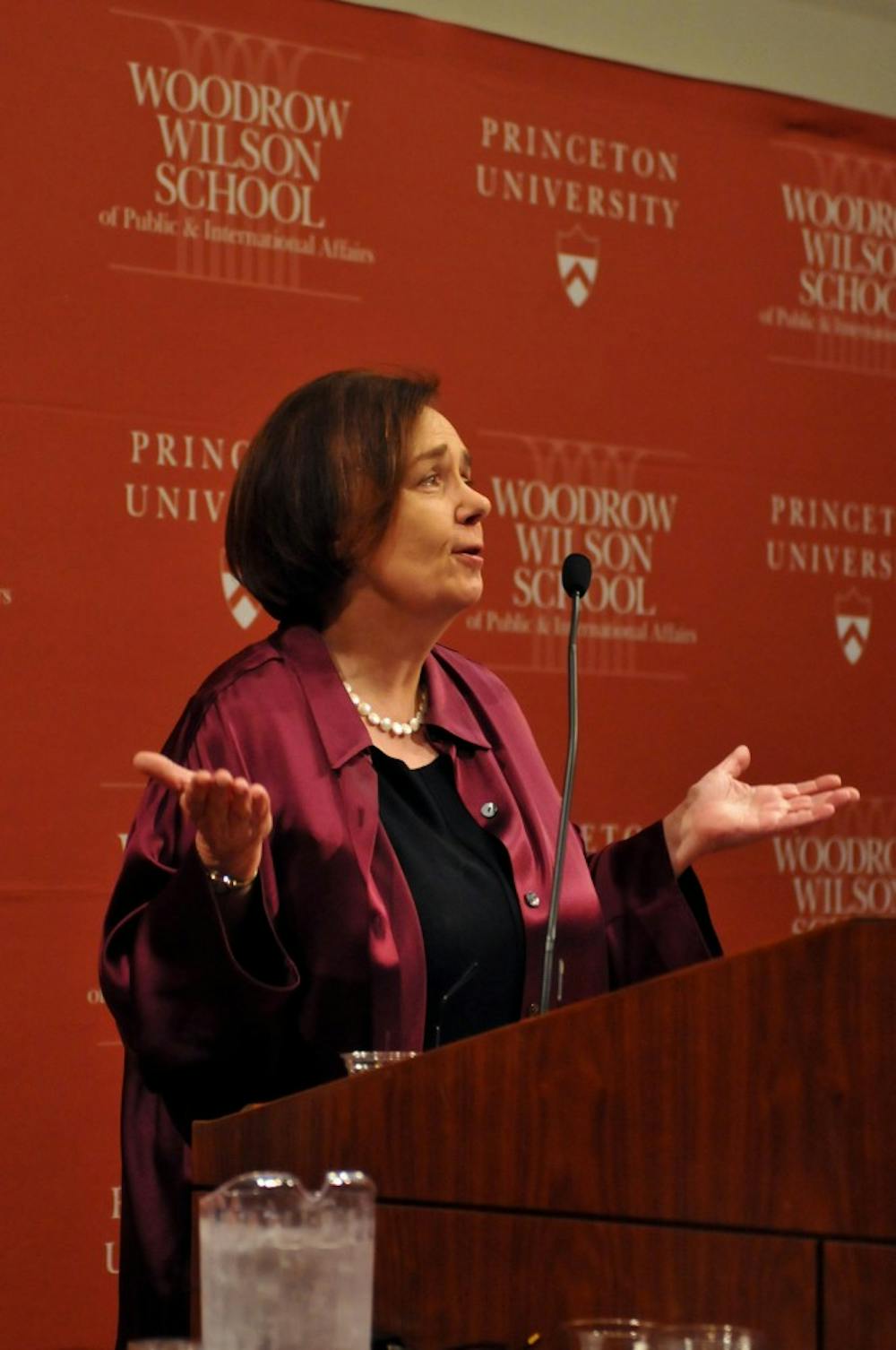The birth control pill, the economy of the 1970s and the civil rights movement were the three factors that made the boom of women’s rights between 1964 and 1972 possible, New York Times columnist and former editor of the Times’ editorial page Gail Collins said in a lecture on Tuesday.
Discussing her 2009 book “When Everything Changed: The Amazing Journey of American Women from 1960 to the Present,” Collins shared anecdotes from various women who were part of the women’s rights movement.
“A vision about the way things should be that had existed for millennia, ever since the beginning of Western civilization, with women in the home taking care of kids while men were outside running the public world —that vision changed overnight,” Collins said.
In 1960, women faced social pressure if they weren’t engaged by their junior year of college, Collins said, adding she believes this expectation existed because effective birth control was not available.
Once the birth control pill became available to women, female applications to law and medical school soared, according to Collins. Thus began the sexual revolution, which she calls “the most popular revolution.”
But the biggest influence on the women’s rights movement, Collins argues, was the civil rights movement.
“It was a defining moment in American life. It defined the women’s movement and all movements for liberation following it,” Collins said. “Once the country digested and understood what had happened, it became very sensitive to issues of fairness.”

Other key factors in the women’s rights movement included economic conditions, she said. After the economy took a tumble in the 1970s, families had more incentive to put wives to work to support their lifestyles.
Collins, who was the first female editor of the Times’ editorial page, said she doesn't know what to say when asked about hurdles she encountered as a woman pursuing a career in journalism.
“There weren’t any,” Collins said. “I came one second — historically speaking — behind the women who filed the petitions, who got in their bosses' faces, who filed lawsuits and made their bosses see the light.”
Members of the audience asked Collins about today’s women’s rights issues, including connotations associated with the word “feminism” and her view of the next frontier in gender equality.

Collins also discussed what she calls today's political war on women, which she argued presents a unique opportunity to draw attention to key women's issues. She cited Hillary Clinton’s potential role in the 2016 presidential election and the way women and men today are dividing domestic duties, as both have become large players in the workforce, as the major women’s rights issues of the present.
The lecture was given in Dodds Auditorium in Robertson Hall and had over 175 attendees. It was hosted by the Wilson School.








